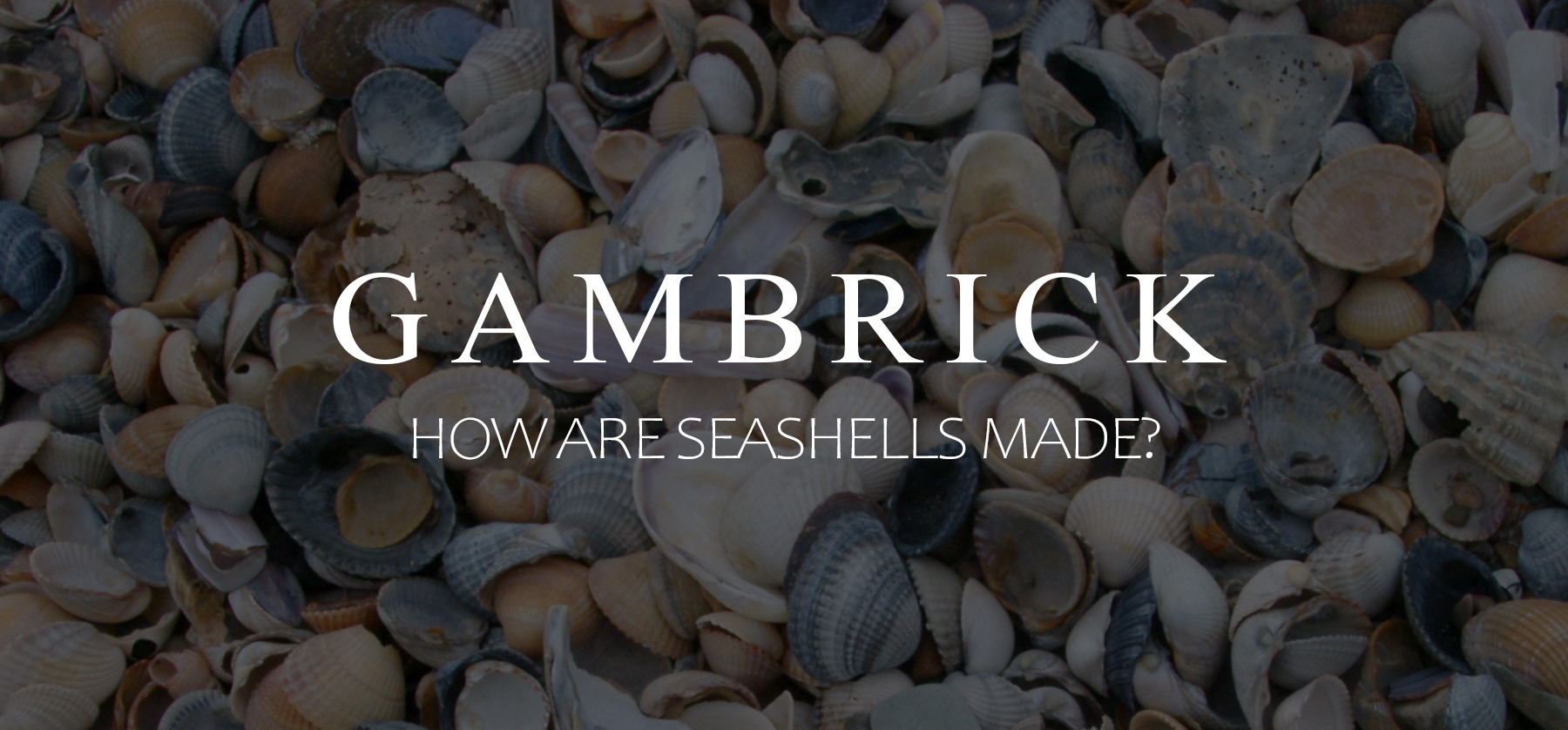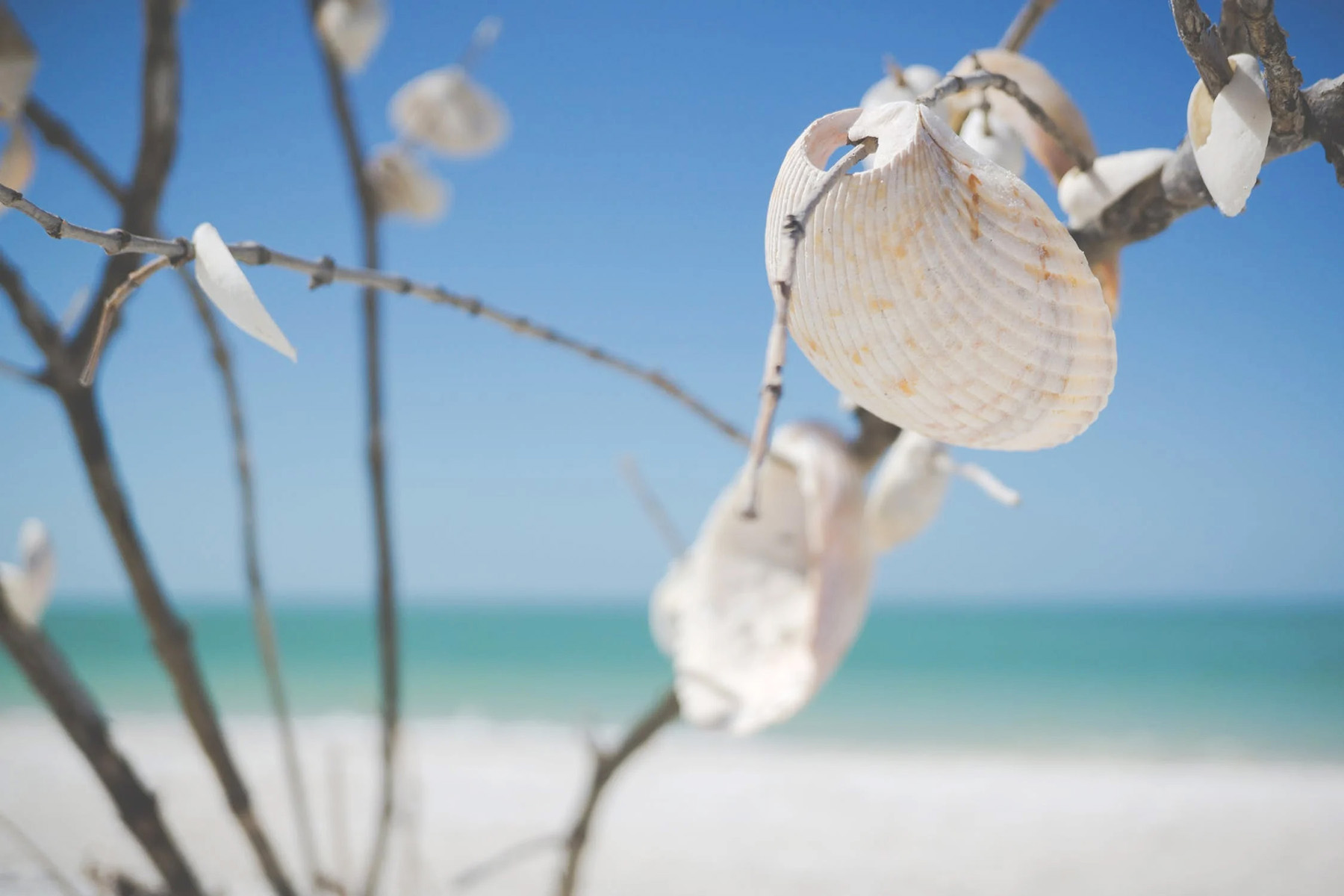How Are Seashells Made?
Mollusks are invertebrate animals that include snails, clams, and octopus. Their bodies are soft and fleshy so they grow a hard outer shell for protection. The shell is slowly secreted over time by a specialized organ called a mantle. The mantle is a layer of tissue that surrounds the mollusk’s body and is responsible for the production of a shell. As the mollusk grows, its mantle secretes layers of protein and calcium carbonate. These layers are laid down in a specific pattern and slowly harden over time to form a shell. The shell becomes thicker and stronger as more layers are added. If the shell is damaged, Mollusk’s will grow new shell to repair it.
Seashells are primarily made up of calcium carbonate, proteins and other minerals which are abundant in the Ocean.
The shape and size of a seashell is determined by the species of mollusk that made it. It can also be influenced by the mollusk’s habitat, diet, and age. For example, a mollusk living in a rocky environment may have a thicker and more heavily calcified shell to protect it from predators. A mollusk living in a softer sediment environment may have a thinner, more flexible shell.
A Mollusk’s diet and habitat also effect the shells color.
There are several different types of seashells which include bivalves, gastropods, and cephalopods.
- Bivalves are mollusks with shells that are hinged at one end, such as clams and mussels.
- Gastropods have a single, coiled shell, like snails and conchs.
- Cephalopods, such as octopuses and squids, do not have a hard external shell but instead have a mantle and a series of internal shells called “pen” or “stylet.”
Seashells are found all over the world wherever Mollusks live.
How Are Seashells Formed
Seashells are the exoskeleton of a mollusk, such as snails, clams and oysters. Their bodies are soft and squishy so they grow an outer shell for protection. All mollusks have a special organ called a mantle which surrounds its body.
A Mollusk’s mantle secretes proteins and minerals which build up and harden to form its shell. Think of mollusks like natures 3D printer. They secrete tiny rows of proteins and minerals which slowly harden to form the shell over a time.
When you look closely at a shell you can see all the tiny rows of materials that make up the shell. These were all secreted by the mollusk’s mantle.
Seashells are mostly composed of calcium carbonate with no more than 2% protein, and unlike typical animal structures, they’re not made up of cells.
Since a mollusk’s exoskeleton is not shed, their shells must enlarge to accommodate body growth throughout their life. This pattern of growth results in three distinct shell layers:
- Outer: Proteinaceous periosteum (uncalcified). This is mostly made of protein, often rough and may have bumps or spikes.
- Middle: Prismatic layer (calcified). Calcium carbonate forms calcite crystals which fill in the spaces, making the shell dense and tough to break.
- Inner: Pearly layer of nacre (calcified). A smooth, iridescent layer called nacre or mother-of-pearl. Nacre is made up of protein and calcium carbonate. It looks and feels completely different from other parts of the shell because the mantle secretes different proteins for different layers.
Damaged seashells use secretions of proteins and calcium from their mantle to repair the shell. For this reason, the process of forming shells is ongoing throughout the mollusks life.
What Are Seashells Made Of?
Seashells are made out of minerals and proteins which are secreted by a mollusk. The main mineral found in shells is called calcium carbonate. It binds to proteins to harden and form the shell. Proteins give the shell shape and support while calcium carbonate makes up most of its mass.
Calcium carbonate can form two types of crystals:
- Calcite: A very common crystal found all over the world in chalk, marble, coral, limestone and seashells.
- Aragonite: A less common crystal with a different arrangement of calcium carbonate.
Both Calcite and Aragonite are found in seashells.
Where Do Seashells Come From?
The seashells you find scattered along the beach are actually the former home of a mollusk. Mollusks are soft and delicate invertebrate animals that form shells as a way of protection. An example of a common mollusk is a clam, snail or oyster. When a mollusk is born, it starts growing the shell that it will live its entire life in. As mollusks grow larger, they enlarge their shell to protect them from the elements and predators.
When its shell is damaged, a mollusk will make repairs by growing new shell.
When a mollusk dies, the shell still remains intact. But because there’s no living mollusk inside to repair it, the shell starts to break down from the waves, sand and rocks. Many white sandy beaches around the world are actually made up of tiny seashell.
Mollusks live in the sea which is filled with minerals. They take in minerals, salts and chemicals from the water and their diet. As they process these materials, they secrete calcium carbonate and proteins from an organ called a mantle.
These secreted salts and proteins harden to form a hard outer shell.
Although the shell is attached to the mollusk, it’s not part of its living body. This is because the shell is formed from minerals, not mollusk cells. As mollusks grow, they continue to excrete calcium carbonate and proteins which repairs and grows the shell.
When a mollusk dies, it leaves behind its shell which you may eventually find on a beach.
How Long Does It Take To Make A Seashell?
The time it takes for a seashell to form depends on the mollusk, shell type and other factors such as habitat, age and diet. Because mollusks don’t shed their shell, it’s always being repaired and enlarged throughout the mollusk’s life.
A mollusk makes it’s shell by secreting proteins and minerals like calcium from its mantle. It gets these minerals from its diet and the water around it. So diet and habitat greatly effect the speed at which a mollusk can grow and repair its shell.
Because a mollusk does not shed its shell, as the mollusk grows, its shell must grow along with it. This happens along the shell’s outer edges.
- A snail adds to its shell around the opening where it’s head pokes out.
- For a clam or mussel, the outer edges are where the two shells separate.
As a shell grows it creates growth rings, like a tree. These rings allow scientists to measure a mollusk’s age.
When the mollusk inside dies, its shell remains. It’s gradually pounded and ground down by the sea, sand and rocks. They become part of the sand and the ocean. White beaches around the world have sand made almost entirely of tiny shells.
Types Of Seashells
There are three main types of seashells: bivalves, gastropods, and cephalopods. The shape and size of a seashell is determined by the species of mollusk that made it. It can also be influenced by the mollusk’s habitat, diet, and age.
- Bivalves: These are mollusks with shells that are hinged at one end and can be opened and closed. Examples include clams, mussels, and scallops. Bivalve shells are typically symmetrical and made up of two equal-sized halves, or valves, that are connected by a hinge. The shells of bivalves are often smooth and have a rounded or oval shape.
- Gastropods:These are mollusks with a single, coiled shell that’s usually asymmetrical. Examples include snails, conchs, and whelks. The shells of gastropods are typically spiral in shape and can vary in size and color. Some gastropod shells have a glossy finish, while others are more matte in appearance.
- Cephalopods:These are mollusks that have a mantle and a series of internal shells called “pen” or “stylet.” But they don’t have a hard external shell like most mollusks do. Examples include octopus and squid. Cephalopod shells are usually small and are located within the mantle tissue. They serve as a support for the animal’s internal organs and help to provide buoyancy.
In addition to these three main seashell types, there are many variations and sub-types within each group.
Why Do Seashells Form Different Colors
The color of a seashell is determined by the mollusk that made it. They come in a wide range of colors like white, brown, black, pink, red, orange, yellow, green, blue, and purple. A seashells color is determined by a variety of factors which includes the species of mollusk, habitat and food supply.
For example, mollusks living in warm tropical waters eat a wide variety of foods, so they produce very colorful shells. On the other hand, mollusks living in cold water eat a limited number of foods so their shells have less color.
Some species of mollusks produce shells with distinct colors and patterns. This can be used to identify and classify the mollusk. For example, some snails produce a brown or black shell while others create a shell that’s white, pink, or red.
Habitat is another big factor that effects the color of a shell. Mollusks primarily grow a shell for protection. They may lighten or darken the shell for camouflage based on the environment around them. This helps them blend in and avoid predators.
Pigments and other substances contribute to a seashells color. Those pigment are come from the habitat and diet of the mollusk. For example, the shells of certain snails are pink due to the presence of a pigment called “conchiolin”, which comes from the snail’s diet.
Other mollusks secrete substances onto the surface of their shells which creates a colorful pattern. For example, the shells of certain species of abalones are iridescent due to the presence of a substance called “mother-of-pearl.”
How Are Conch Shells Made?
Conch shells are made by the mollusk which lives inside them called a large sea snail. The sea snail secretes proteins and minerals like calcium carbonate from a special organ called a mantle. As soon as the snail is born they start growing their shell. This process continues throughout the snail’s life. As they grow larger, they produce more shell. When the shell is damaged, the snail makes repairs by producing new shell.
Conch shells are identified by their large size and spiral shape.
Salts, chemicals and minerals are collected by the mollusk from the ocean and the food they eat. They then secrete these minerals from their mantle to form the shell. Because of their size, the formation either occurs to the left or right sides of the snail. This is what produces the shells spiral appearance.
- A shell that forms to the right is called a dextral.
- A shell that forms to the left is called a sinistral.
A shell can also produce protruding points which jut out from the shell. They can average in size from 6 to 12 inches which is much larger than a regular seashell.
The Importance Of Seashells
Seashells are an important part of a marine ecosystem and play a variety of roles in the environment. They provide habitat and shelter for a wide range of organisms including small invertebrates and fish. The shells of bivalves, for example, help filter and clean the water in which they live.
Seashells also play a role in the carbon cycle by helping to remove carbon dioxide from the atmosphere. They then store that carbon in the form of calcium carbonate. This process, known as carbon sequestration, helps to regulate the amount of carbon dioxide in the atmosphere and mitigate the effects of climate change.
Seashells are also valued for their cultural and economic significance. Many people collect seashells as a hobby. They’ve been used for centuries in art and crafts, jewelry, and other decorative items. Tourism industries in coastal areas rely on the presence of seashells to attract visitors and generate income.
Human activities can have negative impacts on seashell populations.
- Over-fishing can deplete the population of mollusks that produce seashells.
- Water pollution can contaminate the water which makes it difficult for mollusks to survive.
There are efforts underway to conserve and protect mollusks and the ecosystems in which they live. This includes initiatives to regulate fishing practices, reduce pollution, and protect marine habitats.
Do Seashells Reproduce?
Yes, seashells are produced by mollusks, which are animals that reproduce. Mollusks have both male and female individuals and fertilization occurs externally in most species.
During the reproductive process, the male mollusk produces sperm, which is then transferred to the female mollusk through a specialized organ called the “gonopore.” The female mollusk then fertilizes her eggs with the sperm and releases the fertilized eggs into the water.
In some species of mollusks, the fertilized eggs develop into larvae, which are small, free-swimming creatures that eventually settle on the bottom of the ocean and begin to form shells. In other species, the fertilized eggs may develop directly into adult mollusks without going through a larval stage.
Once the mollusk has matured, it begins to produce a shell. The process of shell formation begins within the body of the mollusk and is carried out by a specialized organ called the mantle. The mantle secretes layers of protein and calcium carbonate which hardens to form a shell. Over time, the shell becomes thicker and stronger as more layers are added.
Human activities such as over-fishing and pollution can have negative impacts on mollusk populations. But there are efforts underway to conserve and protect mollusks and the ecosystems in which they live. This includes initiatives to regulate fishing practices, reduce pollution, and protect marine habitats.
Summary: How Are Seashells Made?
Mollusks are invertebrate animals that include snails, clams, and octopus. Their bodies are soft and fleshy so they grow a hard outer shell for protection. The shell is slowly secreted over time by a specialized organ called a mantle. The mantle is a layer of tissue that surrounds the mollusk’s body and is responsible for the production of a shell. As the mollusk grows, its mantle secretes layers of protein and calcium carbonate. These layers are laid down in a specific pattern and slowly harden over time to form a shell. The shell becomes thicker and stronger as more layers are added. If the shell is damaged, Mollusk’s will grow new shell to repair it.
Seashells are primarily made up of calcium carbonate, proteins and other minerals which are abundant in the Ocean.
The shape and size of a seashell is determined by the species of mollusk that made it. It can also be influenced by the mollusk’s habitat, diet, and age. For example, a mollusk living in a rocky environment may have a thicker and more heavily calcified shell to protect it from predators. A mollusk living in a softer sediment environment may have a thinner, more flexible shell.
A Mollusk’s diet and habitat also effect the shells color.
There are several different types of seashells which include bivalves, gastropods, and cephalopods.
- Bivalves are mollusks with shells that are hinged at one end, such as clams and mussels.
- Gastropods have a single, coiled shell, like snails and conchs.
- Cephalopods, such as octopuses and squids, do not have a hard external shell but instead have a mantle and a series of internal shells called “pen” or “stylet.”
Seashells are found all over the world wherever Mollusks live.
If you have any questions about seashells, email any time.
























